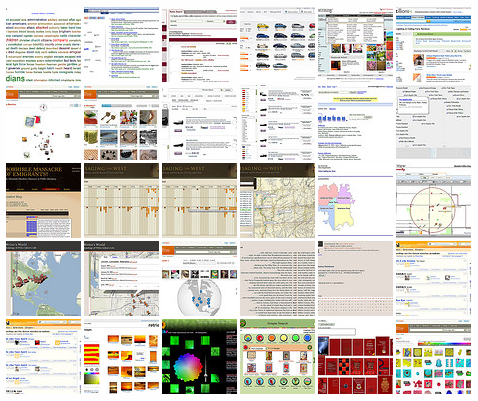The field of information storage and retrieval concentrates heavily on mathematic formulas for ideal retrieval, and while this is really fascinating (and way over my head) I am also interested in new methods that have been developed for information retrieval in the last five or so years. That’s not to say math is not involved in the new methods- it’s still there, but there are new methods of collecting and using metadata and analyzing materials that are surprisingly useful. 
Types of Alternative Search
Alternative search technologies can be divided into a few distinct categories. There’s more than I have listed, I’m sure, but these are the ones I am primarily interested in.
- Many sites use existing human or computer supplied metadata to find and display information, but some sites are taking this approach above and beyond the traditional ways to create new and novel ways of finding information.
- Some searches analyze a documents’ contents (documents is used in the loosest form here, and meant to include everything from text to sound, images, and video) to return a result. Text is traditionally used for this, but some aspects of images are very easily returned in this way. For instance, it is fairly easy to analyze a picture for an average color and search by colors nearby in the color spectrum.
- A final method of search and retrieval is to rely on user added metadata. This form of search is becoming increasingly popular, and sites are inventing new ways to encourage users to supply their own metadata.
Two further distinctions in retrieval systems can be made: finding systems and browsing systems. Finding systems assist the user in finding a specific item, for instance, a picture of a cat. A finding system may also help answer a specific question. A browsing system helps the user find something, even if they are not exactly sure what they want. Browsing may also help the user make connections in a collection of documents, an especially useful attribute in online exhibits; in this way, browsing helps the user formulate a question rather than find an answer. A system that doesn’t work as a finding system may work wonderfully as a browsing system. One final note is that more and more systems use a combination of search techniques to find a relevant match.
Over the next few days I’ll examine a few sites that use existing metadata, the document’s content, or user supplied metadata to facilitate finding and browsing.
